150
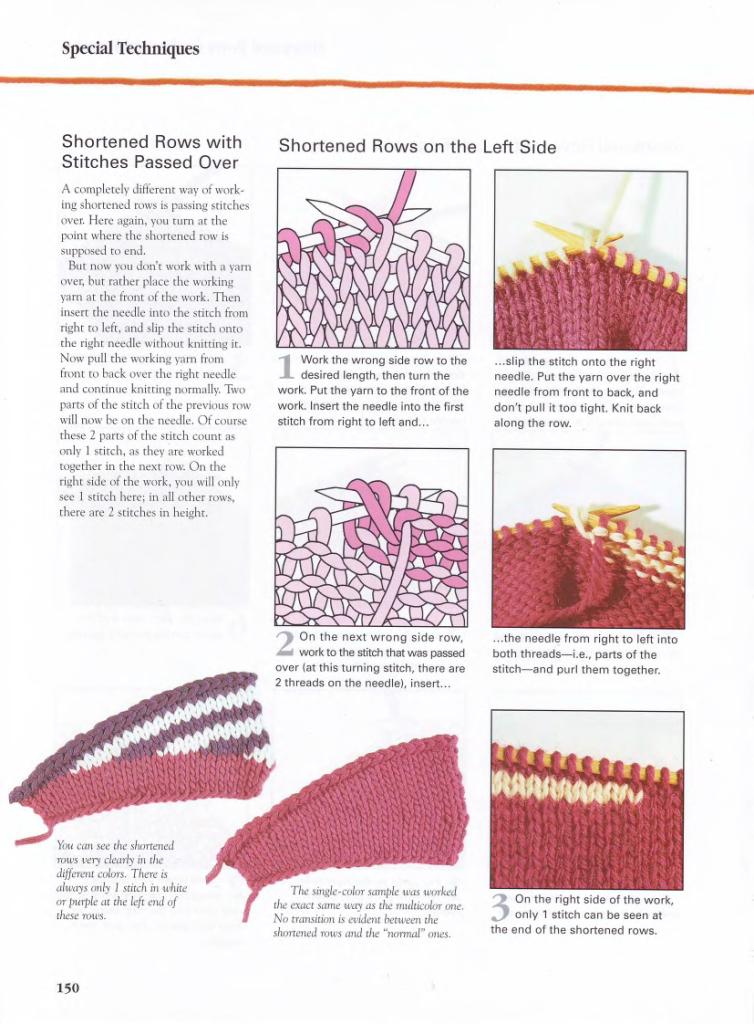
Spccial Techniąues
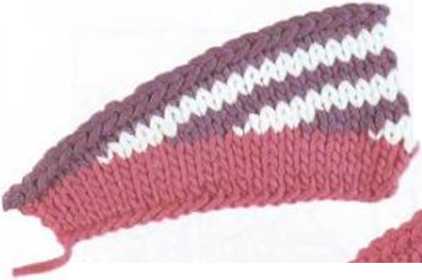
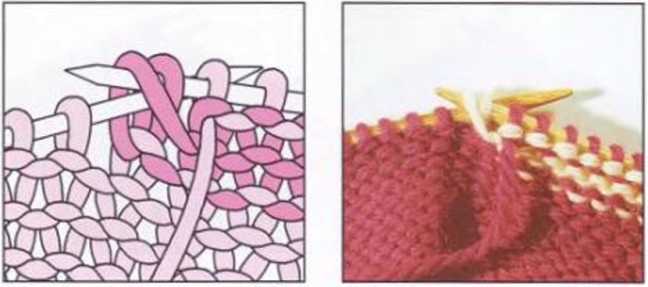
...the needle from right to left into both threads—i.e., paris of the stitch—and purl them together.
Shortened Rows with Stitches Passed Over
A completcly difiercnt way ot work-Ing shortened rows is passiny stitches twer. Herc uyain, you tum ar rhe point wherc the shortened row is supposed to end.
But now you dont work with a yam over, bur rather place the workiny yam at the front of the work. Thcn insert the necdlc tnto the stitch front nyhr to left, and slip the stitch nnto the right needle wlthout knitting it. Now puli rhe workiny yam from liont to h.ick ovor the nyhr needle and conrinue knittiny nortnully. Tw«» parts of the stitch of the previous row will now k* on the needle. Of course these l paris of the stitch count as only 1 srirch, a> rhey arc worked together in the next row. On the nyhł side ot rhe work. you will only sec 1 stitch herc; m all other rows. rhere are 2 stitches in hciylu.
Y(*( om set (Iw slwrreneJ mu's ivr» clearły m t/ie differenl colors. Therc is altom nuN 1 srrtc/i iii ufirre or l>urplc at the left eiui of ihe.se n>us.
Shortened Rows on the
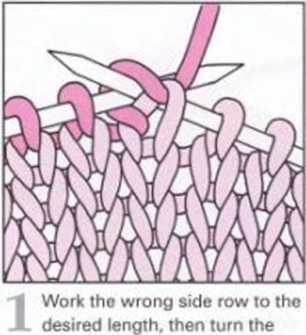
work. Put the yarn to the front of the work. Insert the needle into the first stitch from right to left and...
2 On the next wrong side row.
work to the stitch that was passed over lat this turning stitch, there are 2 threads on the needle), insert...
T/ic single-co/or samplc uun uorkcd t/ie e.xuct suine um as iłu wultu.(iUrr one, No tranaiion is cudem bettwen the shnncncd mus and the “normal" on es.
Left Side
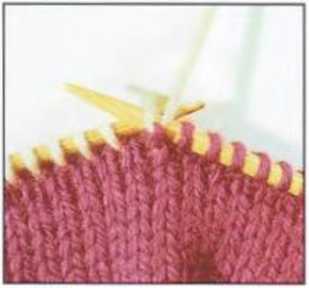
...slip the stitch onto the right needle. Put the yarn over the right needle from front to back. and don’t puli it too tight. Knit back along the row.
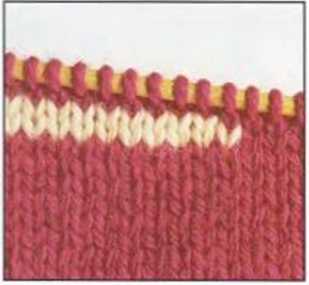
3 On the right side of the work, only 1 stitch can be seen at the end of the shortened rows.
150
Wyszukiwarka
Podobne podstrony:
8 The noxt stitch is a knit stitch of tho stitch, from right to left. and and is twisted on the need
Tunisian (Afghan) Crochet Tunisian Simple Stitch f Insert hook from right to left behind single vert
kwiat HINT: Smell the flower at your nos* (from right to loft on your noso)
img031 (27) Stitch Guide Picot Bind-Off: Ssk, *sl st from ssk to left needle, knit this st, sl new s
14farewelltoarms HEY BET MEM Scan from rlght to left 14. FAREWELL TO ARMS
REYIEWS 297 291-296). The process from bondage to liberation is expressed by means of the evolution
CCF20110521�015 stu i iun a03 Surgery:word building 3 Use the word on the right to form a suitable w
Crochet Borders55 #142STrrCHES & NOTES Back Bump sc: Insert hook from top to bottom into horizon
13CFSv2 Mean 2m Temperaturę Anomaly (°C) from 00z18Mar2020 to 00z25Mar2020 (Days 15-21) Average of l
13CFSv2 Mean 2m Temperaturę Anomaly (°C) from 00z25Mar2020 to 00z01Apr2020 (Days 22-28) Average of l
013(1) Nom©___ Sklll: Tracing curved linesTracę the dotted llne from left to right to help each ftog
Nom©___ Sklll: Tracing curved linesTracę the dotted llne from left to right to help each ftog hop to
Nom©___ Sklll: Tracing curved linesTracę the dotted llne from left to right to help each ftog hop to
Nom©___ Sklll: Tracing curved linesTracę the dotted llne from left to right to help each ftog hop to
system 93 93 ready to hegin an absolutely corresponding action (but replace the word " right &q
więcej podobnych podstron